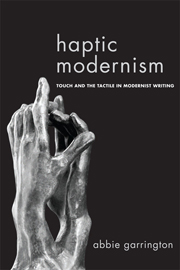Book contents
2 - James Joyce's Epidermic Adventures
Published online by Cambridge University Press: 05 September 2013
Summary
Masturbatory modernism
‘I do not particularly like Ulysses or James Joyce’ (West 1987b: 52). In her book-length, experimental essay ‘The Strange Necessity’ (1928), first published a year after Sunflower was abandoned and the year prior to the publication of Harriet Hume, West overcomes this lack of enthusiasm to offer an extended response to Ulysses, alongside a traveller's notes on Paris, and broad speculations on the nature of aesthetic experience. Amongst these topics, she addresses several of the haptic concerns also discernible in her fictional works of the period. She refers to kinaes-thesis in her observation that ‘we all have a certain body-consciousness that packs away a great deal of latent information about how we feel when we move’; one which also provides ‘a working knowledge of what we can do with our muscles and our nerves and all [our] other physical possessions’ (99–100). She echoes Focillon's praise of the hand and attribution of human superiority to the quality of tool-related dextrousness in her claim that ‘man's supremacy is due chiefly to his habit of keeping as much of himself as possible in an outhouse at the bottom of the garden’, an argument against any cyborgian physical incorporation of the machinic (128). Her aesthetics, peculiarly constructed with reference to Ivan Petrovich Pavlov's psycho-neurological experiments with dogs, suggests that the human response to art is an ‘organ’ which is ‘collective and partially external’, a donation of the cortex of the artist to the waiting cortices of his audience, each contributing to a kind of suprasensual ur-brain (175–6).
- Type
- Chapter
- Information
- Haptic ModernismTouch and the Tactile in Modernist Writing, pp. 73 - 114Publisher: Edinburgh University PressPrint publication year: 2013



